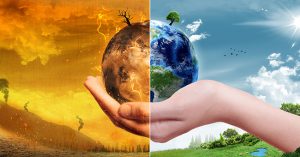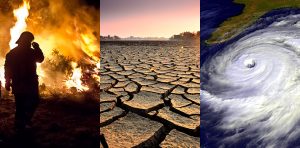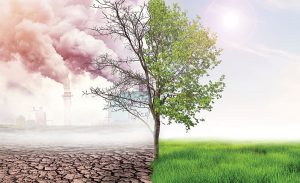Climate change is real, and it is a critical issue that is frequently overlooked. The issue is that the majority of people are unaware of what it is and what causes it. The truth is that the climate is constantly changing.
There are a variety of issues that are contributing to climate change, some of which are related to the Greenhouse Effect, while others are caused by human activity and solar irradiance. Whether we like it or not, the earth is heating hotter. Here’s what’s going on.

Various Causes of Climate Change
- The Greenhouse Effect
First, we must examine the Greenhouse Effect more closely and obtain a deeper knowledge of it. When you do this, you will discover that this is one of the primary reasons of the present climate change.
Because the atmosphere continues to catch the heat that radiates from the globe and confines it between the earth and space, our atmosphere is warming. There are gases that can contribute to the greenhouse effect, and the majority of these gases block heat. This is what causes climate change, and it’s the portion that we can’t do anything about, except from turning green.
_______________________________________________________________________
Buy Organic Products Online at best prices at https://www.getgreen.co.in .
________________________________________________________________________
- Greenhouse Gases
Here are a few gases that may contribute to climate change. The first thing you’ll notice is water vapour. This is the most plentiful gas that contributes to the Greenhouse Effect. It rises as the earth warms, producing more clouds and precipitation in the process.
Even though it is one of the more modest components in our atmosphere, carbon dioxide performs a significant role. It is produced by a multitude of processes, including respiration, volcanic activity, deforestation, fossil fuel combustion, and others. The amount of carbon dioxide in our atmosphere continues to rise, making climate change much more visible these days than it was previously.
- Ocean Currents
Variations in ocean currents can potentially have a short-term impact on climate change. Ocean currents transport massive amounts of heat throughout the globe. The circulation of cold water deep beneath the seas towards the equator and warm water near the equator back towards the pole are major factors in influencing CO2 concentrations in the atmosphere.
- Solar Radiations
For the earth’s climate system, the sun is the ultimate source of energy. Climate change can be influenced by a slight shift in the sun’s energy output. Variations in the sun and changes in Earth’s orbit are examples of these changes. The climate can become warmer during periods of higher solar intensity and cooler during periods of lower solar intensity due to changes in the sun.
Solar changes may have played a role in previous climate change, according to studies. For example, the “Little Ice Age” occurred from around 1650 and 1850, and low solar activity may have played a role.
- Earth Orbital Changes
Climate change can be caused by a small shift in the earth’s tilt. While warmer summers and colder winters are associated with more tilt. Over tens of thousands of years, these minor and slow changes can lead to significant changes in the strength of the seasons.
- Human Activity
The use of fossil fuels for electricity, heat, and transportation, according to the Environmental Protection Agency, is the most major contribution to climate change in the United States. Automobiles, trucks, ships, trains, and planes produce the greatest amount of CO2, hastening global warming and continuing to be a substantial contributor to climate change.
According to the Intergovernmental Panel on Climate Change’s Fifth Assessment Report, a group of 1,300 independent scientific experts from all over the world convened under the auspices of the United Nations concluded that human activities have warmed our planet by more than 95 percent in the last 50 years.
Because of the industrial activity that our modern civilization relies on, atmospheric carbon dioxide levels have climbed from 280 parts per million to 414 parts per million in the last 150 years. The group also determined that human-produced greenhouse gases like carbon dioxide, methane, and nitrous oxide are likely to blame for much of the observed increase in Earth’s temperatures during the past 50 years.
- Deforestation
Deforestation and climate change are frequently linked. Deforestation contributes significantly to global warming, and climate change exacerbates deforestation through wildfires and other extreme weather. Deforestation is the world’s second major driver of global warming, accounting for nearly a quarter of all greenhouse gas emissions. Deforestation in tropical rainforests emits more carbon dioxide into the atmosphere than the total number of vehicles and trucks on the road worldwide.

Devastating Effects of Climate Change
Climate change has the potential to produce a wide range of negative repercussions. It is critical to take action to help reduce the quantity of change that occurs and to slow down the rate at which it occurs. If we do not make some adjustments, the earth will become too hot for people to live comfortably at some point. It is already having an effect on plant and animal life, and if you don’t want it to get any worse, now is the time to go green.
- Change in Rainfall Patterns
Excessive rains, droughts, hurricanes, and floods have become more common in recent decades. While few locations receive adequate rainfall, others suffer from droughts throughout the year.
- Depletion of Arctic Ice
For all of us to survive on this planet, the greenhouse effect is required. Nonetheless, an increase in greenhouse gases causes temperature to rise, which can have negative consequences for the ecosystem and ecology. The melting of Arctic ice has been attributed to rising atmospheric temperatures.
- Wildfires
The heat and dry conditions encourage flames to grow over deep forests, creating a calamity waiting to happen. They not only limit the amount of green cover, but they also push forest animals to higher elevations. Animals that are unable to survive go extinct, and their names are added to the endangered species list.
- Heat Waves
The vast amount of greenhouse gases emitted by companies, transportation, and agricultural operations raises CO2 levels in the atmosphere and warms it. Heat waves result from the rising temperature, making it difficult for people to survive.
_______________________________________________________________________
Read Also : Acid Rain: Causes, Effects, Solution | Everything You Need to Know
________________________________________________________________________
- Loss of Wildlife Species
Wildfires, deforestation, and shifting habitat have resulted in the extinction of numerous species, the extinction of a few others, and the migration of the remainder. According to researchers, one-fourth of Earth’s species could become extinct by 2050. The polar bear has been added to the list of creatures that may become extinct as a result of rising sea levels in the previous decade.
- Rise in Sea Level
Some places of the world will naturally be warmer than others, but as the climate shifts, these areas will shift as well. Warmer temperatures may cause some locations to receive insufficient precipitation, while others may receive more than they should. It will also cause parts of glaciers to melt, perhaps causing flooding in some locations and raising sea levels.
- Shifting Habitat
Plants and animals have been pushed to higher altitudes by prolonged heat waves, deforestation, wildfires, and high temperatures. Worse, most of them are no longer able to exist due to changing climatic conditions and are on the verge of extinction.
_______________________________________________________________________
Read Also : How agriculture and climate change are related: causes and effects
________________________________________________________________________
- High Temperatures
The greenhouse effect is the result of ongoing increases in greenhouse gases in the atmosphere causing the temperature to rise. Though the greenhouse effect is vital for all of us to survive on this planet, exceeding a certain level of these gases will only have negative consequences for us and the ecosystem. The average temperature of the earth increased by 1 degree Fahrenheit during the last century, which is cause for alarm.
Climate change, as you can see, may be a very destructive factor on our world. It’s past time for you to consider what you can do to assist improve the environment and slow down the effects of climate change. If we can accomplish this, the world will be able to sustain itself for a far longer period of time. However, this does not rule out the possibility of climate change.









I would like to convey my respect for your kindness in support of those people that really need assistance with this particular question. Your personal dedication to getting the message around came to be pretty beneficial and has continually helped workers just like me to reach their ambitions. The insightful report entails a great deal a person like me and especially to my office colleagues. Thanks a ton; from all of us.